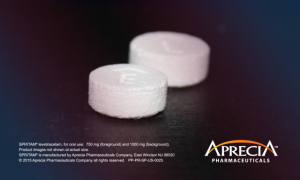by
Lisa Chamoff, Contributing Reporter | August 17, 2015
3-D printing has been used to make orthopedic implants and surgical guides, and now the technology has entered the pharmaceutical industry.
While printing medications at home is still a long way off, the U.S. Food and Drug Administration recently approved the first 3-D printed prescription drug, an oral medication called levetiracetam that treats seizures in patients with epilepsy. Sold by Aprecia Pharmaceuticals under the name Spritam, the pill is built by a 3-D printer in 30 to 40 layers, instead of the traditional molding process, said Aprecia spokeswoman Jennifer Zieverink.
The company calls this proprietary 3-D printing process the ZipDose Technology platform, and the idea is to help children and older adults who have difficulty swallowing pills.



Ad Statistics
Times Displayed: 126318
Times Visited: 7257 MIT labs, experts in Multi-Vendor component level repair of: MRI Coils, RF amplifiers, Gradient Amplifiers Contrast Media Injectors. System repairs, sub-assembly repairs, component level repairs, refurbish/calibrate. info@mitlabsusa.com/+1 (305) 470-8013
“It creates a very porous product that is very loosely bonded, so when you place it on your tongue and take a sip of water, it just disintegrates in your mouth,” Zieverink told HCB News. “It’s like swallowing a liquid.”
The printing method gives the manufacturers the ability to offer high dosages — up to 1,000 milligrams — in a single pill, according to the company.
The company expects to make the 3-D printed Spritam available at the beginning of next year.
Zieverink said Aprecia plans to manufacture other 3-D printed drugs for central nervous system disorders.

